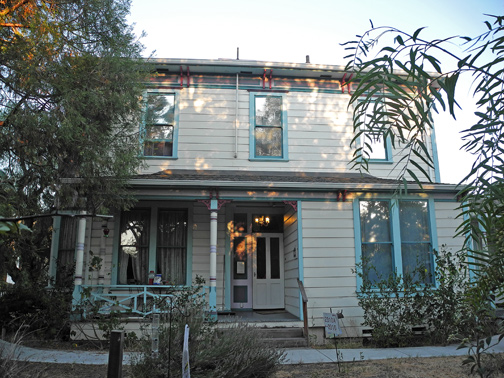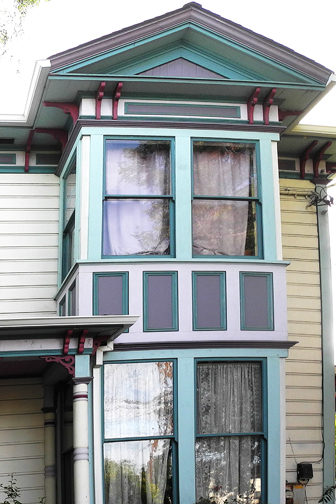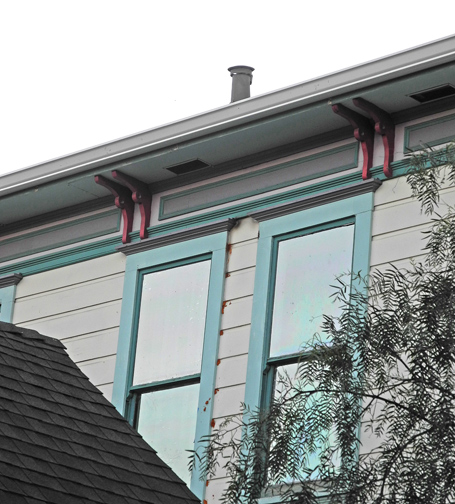 Palo Alto Stanford Heritage
Palo Alto Stanford Heritage 
The history of College Terrace began in 1887. In that year, Alexander Gordon, a wealthy San Mateo farmer and landowner, bought 120 acres from Peter Spacher and Frederick Weisshaar. Originally part of a Spanish land grant, Leland Stanford had tried to buy this tongue of land, which projected into his holdings, but the two owners would not sell. Since construction of Stanford University buildings was underway and Gordon’s land was the nearest private property to the university quadrangle, he seized the opportunity to subdivide his acreage for faculty and fraternity housing. When Gordon advertised his lots as available for “neat cottages and handsome residences”, nearby Mayfield was a vibrant town with crops, lumber and goods being shipped by barges, sailing vessels and railroad.
Robert Norton Kee owned a transfer business in Mayfield in the 1880’s, which engaged in the moving commercial and residential goods throughout the area by horse-drawn wagons. As soon as Alexander Gordon subdivided College Terrace, Kee bought two lots on Yale Street. Gordon had named his subdivision streets in alphabetical order after colleges and universities, and Kee’s house was on Yale Street. Built in 1889, it is the oldest surviving house in College Terrace. It cost $3,500 to build and was considered to be one of the grand houses of its time. In 1890 Kee added a two-story barn for his draft horses. Three years later he purchased a building on present day California Avenue which housed the G. Bracchi Grocery. Kee and his family were representative of the area’s solid middle class citizenry.

The architectural style of the Kee residence is a simplified Italianate with some Eastlake elements. Here the Italianate style is seen in the two-story floor plan with a square tower, groupings of tall windows and the placement of porches between the tower and the house and also at the front right. These motifs are combined with Eastlake ornamentation featuring intricate wood details such as the attic pediment, carved panels, turned porch spindles and verge boards. These decorative wood elements became ubiquitous with the introduction of the power lathe and saw.
At 2,838 square feet, the house has two stories and an attic, horizontal wood siding and a composition shingle roof. The roof is a truncated hip which originally had an iron or wood balustrade at the top. Beneath the second floor eaves are double brackets and a paneled frieze (verge board). Smaller double brackets ornament the front and side porch roofs.

A centered entry door is recessed from the turned porch posts and provides access to a parlor and living room at the front. Sliding redwood doors separate the parlor from the dining room; the kitchen and pantry are at the rear. Interior woodwork, windows and door transoms are original. Much of the paneling and many of the windows and door transoms are original, although the stained glass transom in the dining room door opening to the street was brought in from another old house. The iron stoves in the dining room and kitchen, which were the sole source of heat, have been removed. Four bedrooms of identical size, as well as a bathroom, occupy the second floor. The ceiling of the latter provides access to an unfinished attic.
In 1910, the Kee family sold 2310 Yale, and subsequent owners altered the building’s interior to accommodate four apartments. The house is currently restored and is listed on the National Register of Historic Places for two reasons: “First, it represents the type of housing afforded in its time by the typical middle class owner of average means.” Secondly, “its history over the years is typical of such dwellings. Its use originally as a family home and then, later, as a small-scale rooming, boarding, or apartment house, occupied by…young wage-earning students, or teacher families, has been endlessly repeated throughout the nation.
The neighboring town of Mayfield annexed College Terrace in 1891, and Palo Alto annexed Mayfield in 1925. The survival of the Kee house is fortunate as it conveys the aesthetic and social values of a bygone era and continues to contribute to the neighborly atmosphere of College Terrace. ©
Margaret R. Feuer
PAST, June 5, 2015
E-mail us at either webmaster@pastheritage.org or president@pastheritage.org.
![]() Palo Alto Stanford Heritage—Dedicated to the preservation of Palo Alto's historic buildings.
Palo Alto Stanford Heritage—Dedicated to the preservation of Palo Alto's historic buildings.
Copyright © 2015 Palo Alto Stanford Heritage. All rights reserved.